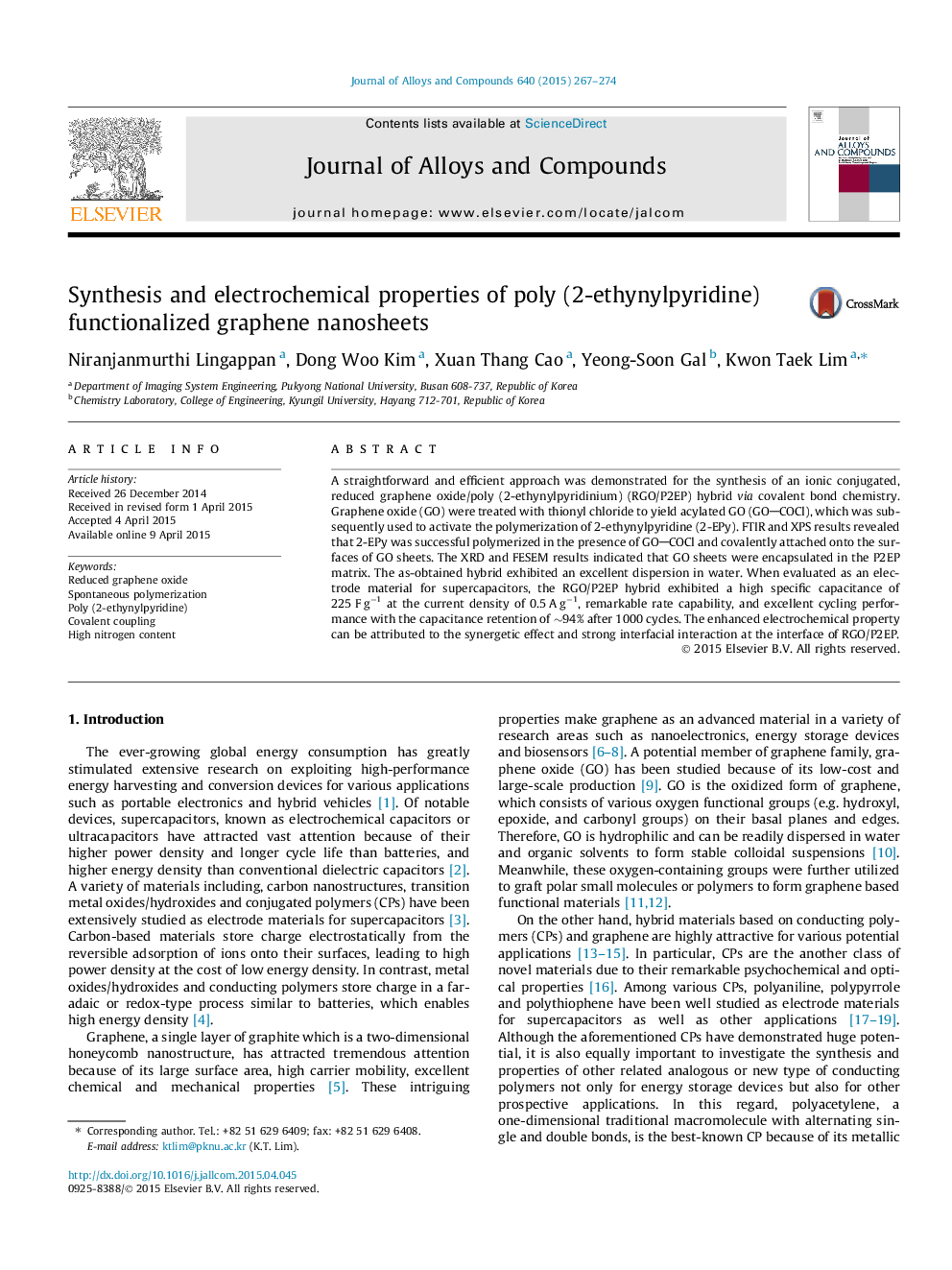| Article ID | Journal | Published Year | Pages | File Type |
|---|---|---|---|---|
| 1608969 | Journal of Alloys and Compounds | 2015 | 8 Pages |
•RGO/P2EP hybrids were synthesized via spontaneous polymerization.•Structure and morphology were investigated in detail.•The hybrid exhibited an excellent electrochemical performance.
A straightforward and efficient approach was demonstrated for the synthesis of an ionic conjugated, reduced graphene oxide/poly (2-ethynylpyridinium) (RGO/P2EP) hybrid via covalent bond chemistry. Graphene oxide (GO) were treated with thionyl chloride to yield acylated GO (GOCOCl), which was subsequently used to activate the polymerization of 2-ethynylpyridine (2-EPy). FTIR and XPS results revealed that 2-EPy was successful polymerized in the presence of GOCOCl and covalently attached onto the surfaces of GO sheets. The XRD and FESEM results indicated that GO sheets were encapsulated in the P2EP matrix. The as-obtained hybrid exhibited an excellent dispersion in water. When evaluated as an electrode material for supercapacitors, the RGO/P2EP hybrid exhibited a high specific capacitance of 225 F g−1 at the current density of 0.5 A g−1, remarkable rate capability, and excellent cycling performance with the capacitance retention of ∼94% after 1000 cycles. The enhanced electrochemical property can be attributed to the synergetic effect and strong interfacial interaction at the interface of RGO/P2EP.
Graphical abstractFigure optionsDownload full-size imageDownload as PowerPoint slide
